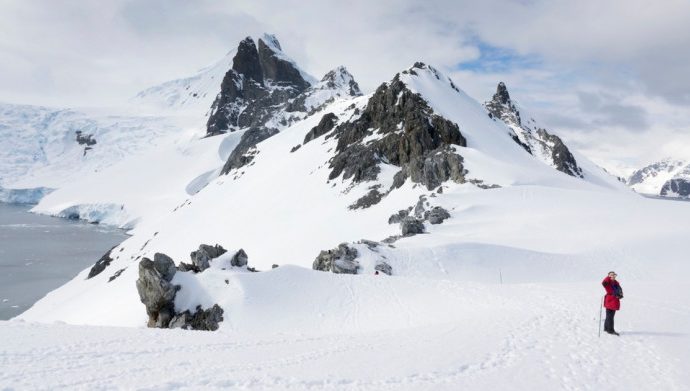This new study will assist scientists in learning more about our Earth’s atmosphere.
Source: Interesting Engineering
Scientists have discovered that glaciers and ice sheets in Antarctica are still releasing radioactive chlorine. This chemical was used in the 1950s and 1960s for marine nuclear weapon tests.
This new information points out that certain parts of the region store and vent radioactive element in different ways than was previously believed.
The research was published in AGU’s Journal of Geophysical Research: Atmospheres.
Radioactive isotopes chlorine
Scientists nowadays use radioactive isotopes chlorine-36 and beryllium-10 when determining how old ice is in ice cores. These cores are barrels of ice taken out of the ground by drilling into ice sheets.
Chlorine-36 is a naturally occurring radioactive isotope, which means it’s different in atomic mass to regular chlorine. It can sometimes be produced by nuclear explosions.
In the 1950s and 1960s, the U.S. carried out nuclear weapons tests in the Pacific Ocean. These tests caused high concentrations of isotopes like chlorine-36. As these radioactive isotopes turned to gas and went up into the stratosphere, some ended up in Antarctica’s ice. It has remained there ever since.
What this new research has discovered is that Antarctica’s Vostok region is still releasing radioactive chlorine into the atmosphere.
Why is this useful research?
By studying chlorine’s behavior in the Antarctic region, scientists can improve ice dating technology. This, in turn, assists researchers to better grasp how Earth’s climate has evolved over the decades.
Co-author of the study, Mélanie Baroni, a geoscientist at the European Centre for Research and Teaching in Geosciences and the Environment in Aix-en-Provence, France, and her team examined chlorine emissions in different parts of Antarctica.
The team took samples of snowfall from Vostok, a Russian research station in East Antarctica, and compared them to samples from Talos Dome, which lies around 1,400 kilometers (870 miles) away. Both samples were then tested for concentrations of chlorine-36.

What the team discovered was that chlorine in the ice from Talos Dome had decreased over time. Whereas Vostok’s samples showed very high levels of chlorine-36, reaching over 10 times the expected natural concentration.
This information demonstrates that Vostok’s snowpack is still releasing radioactive chlorine from the 1950s and 1960s marine nuclear bomb tests. Luckily, this radioactivity is not high enough to harm the environment.
The scientists are currently planning on drilling into a 1.5 million-year-old ice core to further their research.
Source: Interesting Engineering

































Leave a Comment
You must be logged in to post a comment.